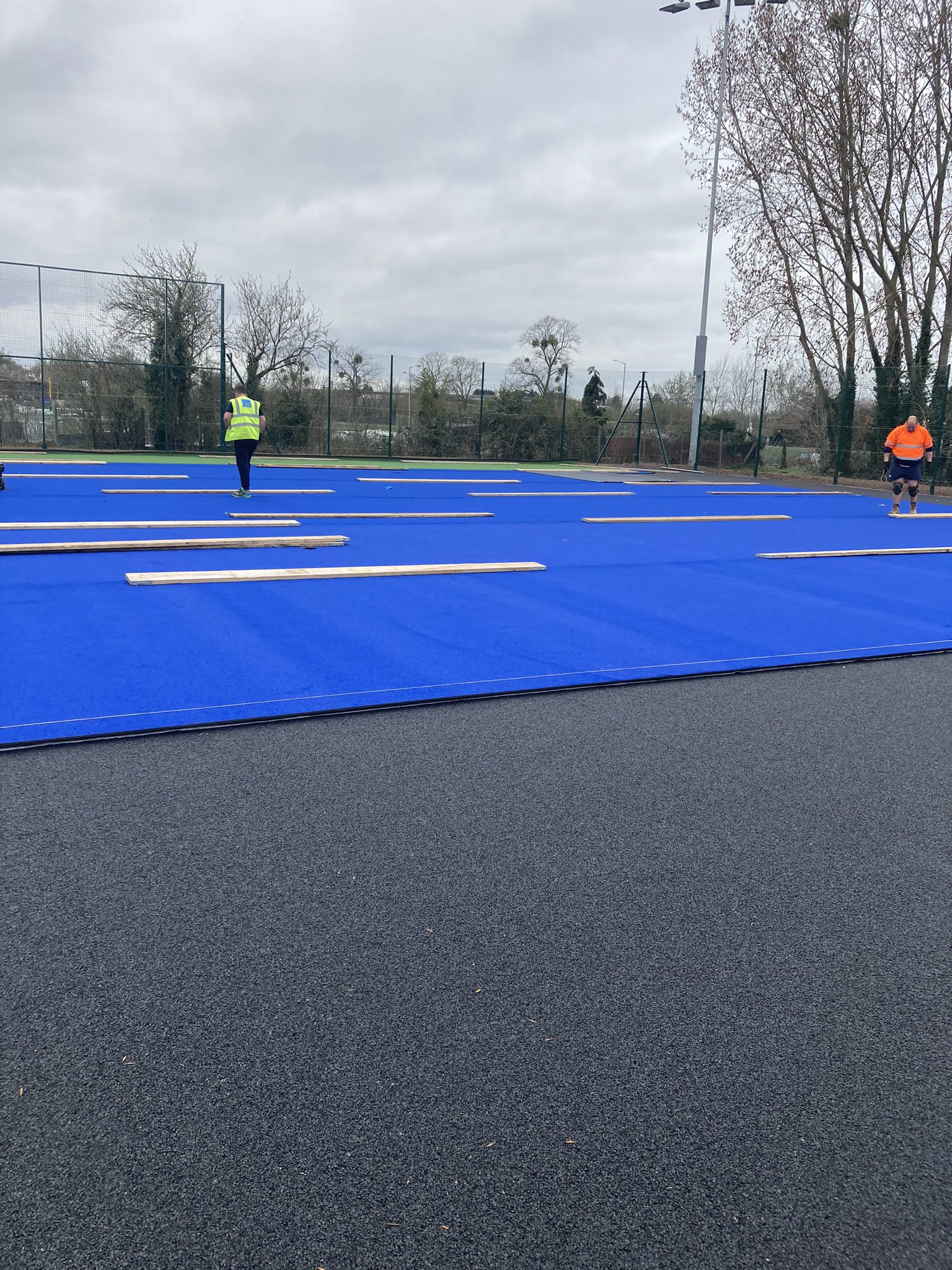Is a shock pad necessary?
by Bryn Lee
I have always believed that pitches play better with a shock pad. And now with growing concerns over the use of microplastic infill and the increased awareness of safety, as well as the requirement for better play, the importance of a performance layer has never been greater.
I remember the very first sand filled pitches (2G as we now would refer to it) laid in the UK. They were installed onto very flat, but hard unbound stone bases, which were copies of the Dutch system, but this used lava stone – a larger material. This allowed energy to dissipate through the gaps, in a similar way to natural turf, whereas the UK pitches used limestone or granite. In Holland, where the fields played well and gave a comfy, hard surface for hockey players, in the UK, after a few months use, the sand compacted, to leave a very unforgiving surface.
The UK chose to introduce a performance layer beneath the turf and above the stone, to overcome this hardness. Initially, this shock pad was factory produced rubber sheets, normally around 10mm in thickness, rolled out onto the base. This certainly helped reduce the hardness, although it brought additional problems of instability and movement, that forced the UK market to look for another shock pad solution.
In Germany, at this time, elastic layers were in use. These were machine laid to thicknesses normally between 20mm and 30mm, straight onto stone. Depending on the mix they could be too soft or just right for synthetic turf fields. In the UK, the contractor/consultant led market had already moved towards more expensive bound bases, as the preferred base system (even harder than unbound stone bases), but it was possible to lay a thinner insitu rubber layer onto this type of sub-surface.
For a few years every pitch had a shock pad. But when the 3G system came along, the pioneering company, who brought it to market, did not use a pad at all. This had been replaced with a loose performance infill, in the turf itself, and rendered a shock pad unnecessary.
This meant that the only time shock pads were used in the UK, was for hockey, until World Rugby introduced their performance standards, which can only be met with a shock pad.
In other countries football pitches, at the highest level, preferred to have a shock pad, which allowed a lower amount of performance infill, was safer, more comfortable and a more durable system. Occasionally, a club pitch in the UK has followed this option, but up to now nearly all 3G fields in the UK do not have a shock pad.
The main reason for this, is cost. Adding a pad can increase costs by £30-50,00 per full size pitch, and the extra benefits a pad brings are not generally considered enough to warrant the extra price. In fact, clients still end up with a more expensive pitch due to the bound construction layer, they are advised by contractors to use. This offers no playing, safety or long term advantages, yet is still used as the “go to” base. In Europe, such a base is not used, with clubs preferring to use the money to include a shock pad in their system.
The increase in shock pad popularity, during 2021, is down to the need to reduce microplastic infill and improve long term performance. It is also linked to the increasing number of old, sand filled or sand dressed hockey fields, being converted to 3G fields. If a shock pad exists then it can often be used under a shorter pile football turf. This meets FIFA Quality and Quality Pro, and provides a safer system than some fields without a pad.
The type of pad now available is also improving and we will look at these options, in more detail, next.






